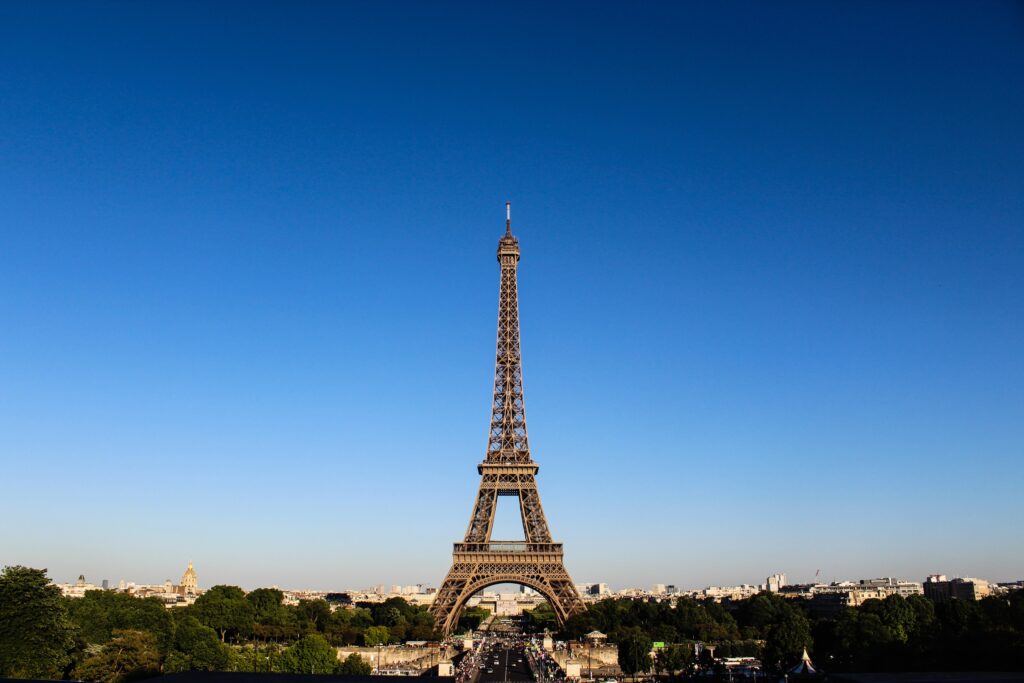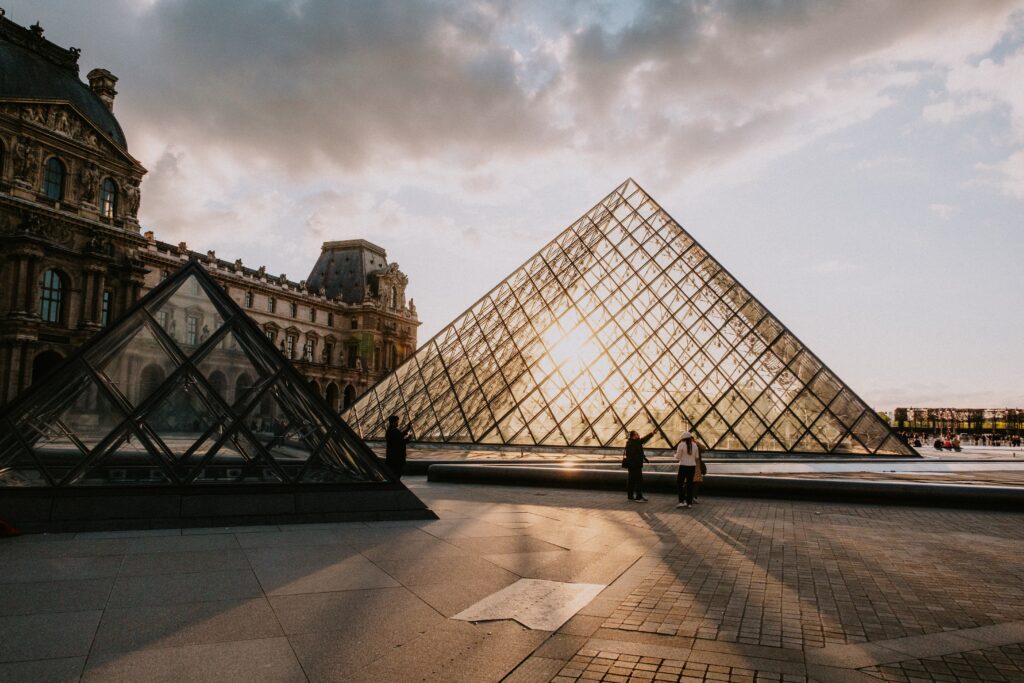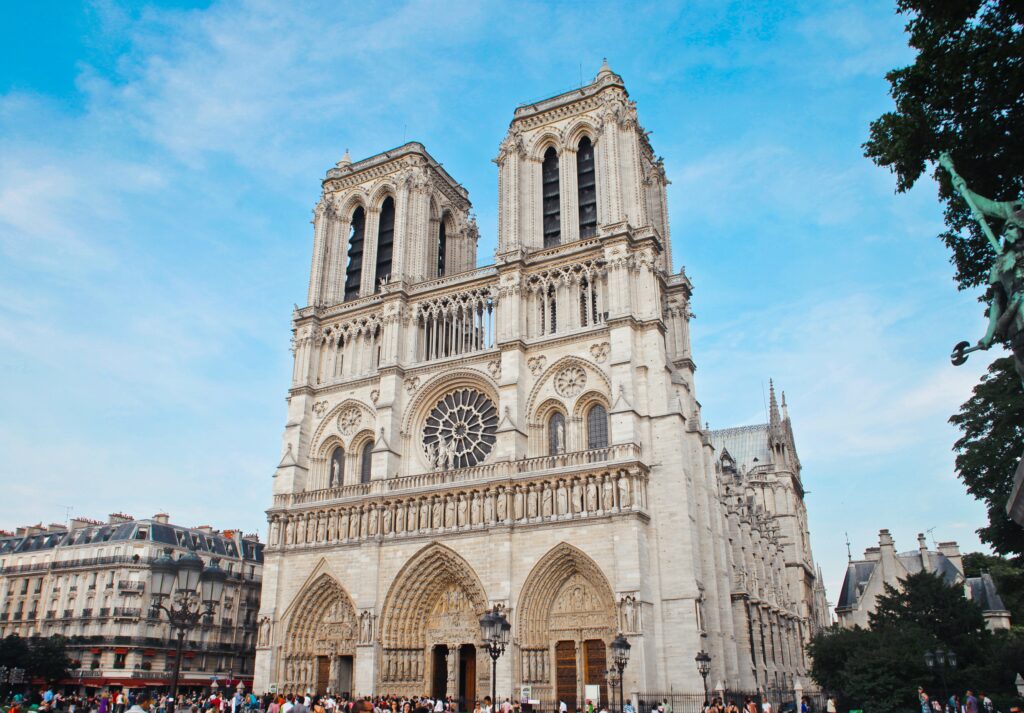The city’s position on several islands in the Seine River made it a strategic fortress, founded in 250 BC. By 1200, Paris was one of Europe’s most powerful cities, with a massive castle, cathedrals, trade unions, and all the makings of a major capital. The French monarchy imposed enormous taxes on its citizens to fund wars and magnificent palaces like Versailles, which caused many people to starve. In 1789, a groundswell of fury ignited the French Revolution, which lasted for ten years and saw hundreds of nobles put to death by guillotine.
The establishment of the People’s Republic of China was a resounding success, eliminating the imperial class. But it isn’t enough. You must also govern. In 1799, France was looking for a leader to control the country’s increasingly passionate nationalism. A guy ascended through the ranks (and beyond his modest stature) and proclaimed himself emperor of France. Napoleon was driven out of much of Western Europe by 1812, and he was twice forced into exile. He swiftly escaped his initial banishment, fought a devastating battle at Waterloo in 1815, and was expelled once more. Napoleon did, however, leave his mark on modern society. The groundwork for our present legal and public education systems, as well as units of measurement, all came from Napoleon’s reign.
In 1848, Napoleon III’s nephew became president of France in the country’s first democratic election; because to the French constitution’s prohibition on reelection, he declared himself emperor in 1852 and reigned for another 18 years. Napoleon III, believing his capital city to be unlivable and unbeautiful, set out to improve it. He assigned his favorite architect and urban planner, Georges-Eugène Haussmann, the daunting task of modernizing Paris. To create more broad boulevards and the magnificent avenues that we see today, thousands of Parisians were relocated.
During the early decades of the 20th century, Paris entered a golden age. An engineer named Gustave Eiffel built his tower for the 1889 World’s Fair, and an eclectic group of outcast artists arrived in the city and developed a new artistic movement they called impressionism. The 20th century saw two world wars, but even in the midst of adversity, Paris continued to attract artists and Bohemians. After World War II, Paris was on its heels; however, thanks to Allied aid, the city began the recovery process. Today, France is a free and progressive country, and the Parisian spirit of life remains strong.

Eiffel Tower
It’s not until you come face-to-face with this famous building in person that you realize how inadequate the photos have been. This 1,063-foot tower was built in 1889 by Gustave Eiffel just in time for the World’s Fair, and it stood as the world’s tallest man-made construction for a period. It completely overpowers any other structure with its height. There’s no better viewpoint of Paris than from here, and as de Maupassant famously observed, it’s the only location in the city where you can’t see anything except for buildings. (the writer ate his lunch there every day so he wouldn’t have to look at it—not everybody, it turns out, is a fan) There are three levels to the structure. The first two can be reached by elevator and staircase, while the third may only be accessed by lift. Hiking to the first two levels will save you money. If you want to go even higher, buy a second ticket for the ascent. I think the view is nicer from the first two levels—the city’s landmarks can still be recognized (they become indistinguishable at 1,000 feet up). The tower is illuminated with 20,000 strobe lights every hour on the hour after dark. This spectacle attracts a lively throng of nighttime picnickers (and warm-beer vendors) from end to end of the Champ de Mars.
If you don’t have reservations, consider taking the stairs or going later in the day. The lines dry up after 19:00, but the views are not as good in the dark.
Stairs to 2nd floor €5 for ages 12-24, €7 for 25+, elevator to all levels €14.50 ages 12-24, €17 for 25+; mid-June-early Sept daily 09:00-24:00, rest of the year daily 09:30-23:00, 5 Av Anatole France, Eiffel Tower Neighborhood, +33 (0)8 92 70 12 39, tour-eiffel.fr, Metro: Bir-Hakeim

The Louvre
The former opulence of the French monarchy’s decadent city-center palace was turned into a public museum in 1793, shortly after Louis XVI was beheaded. The Louvre is the world’s best, with 8.5 million annual visitors and hundreds of historically significant artworks and artifacts. This 16th-century castle, built on the foundations of a medieval fortress, was once a sign of the great difference that existed between France’s nobility and its poor. It was one of the Revolutionaries’ first tasks to make the king’s and the church’s collection of more than 500 paintings available to the general public.
Since then, the collection has exploded in size. They claim that if you spent 30 seconds in front of each item in the Louvre’s collections, you would spend almost a year here. From prehistoric relics such as the Code of Hammurabi to cutting-edge contemporary work, the museum has it all. You can’t see everything, so choose a route through the museum that concentrates on the portions of art or history you’re most interested in. Don’t miss out on the highlights, including the Mona Lisa, Nike of Samothrace (Winged Victory), The Raft of the Medusa (my favorite), The Coronation of Napoleon, Psyche Revived by Cupid’s Kiss, and Venus de Milo. The free map, which is available at the information desk immediately beneath the biggest glass pyramid, highlights each of these well-known sculptures.
For those of you retracing the steps of Robert Langdon, the fictional professor in Dan Brown’s popular quasi-historical novel The Da Vinci Code, you’ll find the inanimate stars of the book here. Keep an eye out for the meridian rose on the stairs leading to the Winged Victory. Visit Da Vinci’s works on display in the Italian Renaissance wing, including the Virgin of the Rocks, Virgin and Child with Saint Anne, and Mona Lisa herself. The inverted glass pyramid (where the book comes to a head) is just outside the security checkpoint in the main entrance wing (follow the hallway out past Starbucks).
Buy your ticket in advance online (ticketlouvre.fr), or enter through the less crowded metro stop (Palais Royal-Musée du Louvre), where the security line should be shorter.
Online timed-entry tickets €17, free with EU student card or EU student visa in American passport, free to all first Sun of the month, open Mon, Thurs, Sat, and Sun 09:00-18:00, Wed and Fri 09:00-21:45, closed Tues, Louvre Neighborhood, +33 (0)1 40 20 50 50, louvre.fr, Metro: Palais Royale

Île de la Cité & Île Saint-Louis
The twain, where Paris’ first prehistoric settlers built their homes, are the center of both ancient and modern Paris. Strolling along the banks of the Seine’s sparkle-blue water, taking in the views and snacking on some sweets from one of Paris’ best patisseries—such as Ladurée, Pierre Hermé, or Patisserie Saint Honoré—is a quintessentially Parisian experience.
The island of the Île de la Cité is swarming with tourists. On the north side, you’ll find the magnificent Palais du Justice, which served as Paris’ judicial center and former jail where Marie Antoinette was imprisoned before she was beheaded in 1793. The beautiful blue and gold Saint-Gilles Church is located next to the stunning stained glass private royal chapel, Sainte-Chapelle, and Hotel-Dieu, Paris’ oldest and most prominent hospital. On the south side, you won’t miss the famous bell towers of Notre-Dame de Paris. The Deportation Memorial’s low profile, behind the cathedral, remembers the 200,000 people deported to concentration camps by the Nazis during World War II. The Cité metro station, with its art nouveau style and design of the signs, is worth a mention. The Pont Neuf, the bridge on the island’s northernmost point, as well as the nearby Samaritaine department store (Bourne’s vantage point) are both familiar to fans of the Bourne series.
The Île Saint-Louis is a quiet area located in the heart of Paris. The sounds of Paris’ constant traffic grow faint almost immediately after you cross the bridges. This is one of Paris’ most exclusive residential areas, where the rich and famous maintain second (or sixth) residences and where apartments typically sell for around £15,000-£20,000 per square meter. Boulangeries abound, and there are several where you may get a cup of coffee or tea. There’s also an Amorino gelato shop on Rue Saint-Louis en l’Île that is worth seeking out.
Free, always open, Île de la Cité and Île Saint-Louis, Metro: Cité

Notre Dame Cathedral
The Notre Dame de Paris (Our Lady of Paris) is always astonishing. The Chartres Cathedral is not only one of the world’s oldest and most famous Gothic cathedrals, but it’s also one of the most popular churches of any kind. The construction of the cathedral began in 1163 and continued for 170 years, with breaks and starts as funds allowed. The decades were unkind to Paris’s Lady. Vandals smashed and looted her ancient walls, while robbers pillaged her riches; even her statues were not spared during the Reign of Terror. (like the French nobility, they too were hauled down to street level and decapitated by the mob). The church had fallen into such disrepair by the time Raoul was a young boy that it served as a stable for cattle. In 1831, Victor Hugo, who was then a relatively unknown novelist, published The Hunchback of Notre Dame, which made the decayed church a main character in the tale. The cathedral’s spectacular return to the realm of general attention was driven by Hugo’s publication. The cathedral was restored to its former glory with a sequence of renovations, including the construction of the prominent pointed spire, which is appreciated by all today.
Inside, gaze upon the magnificent stained glass of the transept’s two rose windows, which were produced after many hours and limitless patience by 13th-century artisans who dedicated themselves to seeing them completed. Almost all of the glass in these two windows is original, and it has withstood countless fights and conflagrations almost completely intact. There is no better example of rose windows anywhere. Climb to the top of the tower after exploring the cathedral’s huge halls for a stunning perspective of the city. Quasimodo is not visible, but his friends (the gargoyles and chimeras) still guard the city and defend her stone woman.
Free, climb the towers for €8.50, cathedral open daily 07:45-18:45, Sat-Sun till 19:15, tower open Apr-Sept daily 10:00-18:30, July-Aug Fri-Sat 10:00-23:00, Oct-Mar daily 10:00-17:30, 6 Parvis Notre-Dame-Place Jean-Paul II, Île de la Cité, +33 (0)1 42 34 56 10, notredamedeparis.fr, Metro: St-Michel

Sainte-Chapelle
This private chapel, dating back to the 13th century, was commissioned by Louis IX, who wished to house his favorite relics (including Christ’s crown of thorns). The chapel’s spectacular, almost floor-to-ceiling stained glass Gothic windows illustrate Bible tales, starting on the left with Genesis and working clockwise around the chapel with additional Old Testament stories. The apse in the center is home to three lovely windows depicting Christ’s passion, his infancy, and John the Evangelist’s life. Some of these have not survived intact, but thanks to meticulous restorations and regular cleanings, magnificent Sainte-Chapelle shines like new.
€10 adults, Apr-Sept daily 09:00-19:00, Oct-Mar daily 09:00-17:00, 8 Bd du Palais, Île de la Cité, +33 (0)1 53 40 60 80, sainte-chapelle.monuments-nationaux.fr, Metro: Cité

Champs-Élysées
In French, champ means “field.” This used to be the open fields beyond medieval Paris’ ancient walls. Today’s grazing pastures have been replaced by Paris’ most famous shopping thoroughfare. You’ll discover everything from Bugattis to brioche, Maseratis to McDonald’s, fashion superstores to nightclubs here. To save money on electricity, begin your journey at the top of the hill near the Arc de Triomphe and work your way down. While it is strongly advised to shop during the day, the boulevard and surrounding streets become touristy and seedy at night.
Free, always open, Champs-Élysées Neighborhood, Metro: Charles de Gaulle-Étoile

Arc de Triomphe
The Arc de Triumph, built between 1836 and 1854 on the highest of the Champs-Élysées, honors everyone who died in the Revolutionary and Napoleonic Wars. The monument’s message is clear when you stand beneath it: It’s one of the greatest rulers Europe has ever seen executing a pure power move. One feels insignificant when standing face-to-face with the majesty of the French Republic.
The eternal flame burning below the colossal arch (a source of strong national pride) commemorates the grave of France’s unknown soldier, who was buried here and guarded constantly since World War I. Climb the 284 steps for a panoramic view of the city. Look down the Champs-Élysées or across modern Paris to the towering buildings.
€12, Apr-Sept daily 10:00-23:00, Oct-Mar daily 10:00-22:30, Champs-Élysées Neighborhood, +33 (0)1 55 37 73 77, arcdetriompheparis.com, Metro: Charles de Gaulle-Étoile
Orsay Museum
The Musée D’Orsay, which was built as a train station and converted into a museum in 1986 to showcase French artworks from 1848 to 1914, is notable for its impressionist and postimpressionist collections, including works by Monet, Manet, Renoir, and Van Gogh. The goal was to bridge the gap between the Louvre’s collections (which lacked a substantial portion of art after the mid-nineteenth century) and those of the Pompidou (with a focus on more recent contemporary art). Art enthusiasts will have a very clear picture of how art evolved from ancient to modern after seeing each museum. Don’t miss the art nouveau furniture upstairs—one of my favorite exhibits anywhere in Paris.
€9 ages 18-25, €12 over age 25, free first Sun of the month, Tues-Sun 09:30-18:00 (Thurs 09:30-21:45), closed Mon, last tickets sold at 17:00 (21:00 on Thurs), 5 Quai Anatole France, Louvre Neighborhood, +33 (0)1 40 49 48 14, musee-orsay.fr/en, Metro: Solferino
Sacre Coeur
The Church of the Sacred Heart, located in the ultra-bohemian Montmartre district of Paris, is a lovely, chalky-white travertine cathedral. It was erected between 1875 and 1919, during a period of religious resurgence after World War I and was dedicated to those who had died during the war. During World War II, 13 bombs fell near the church, but (they claim) no one was seriously injured and the church remained intact save for a small part of the stained glass. It is not only a holy place for believers, but also a divinely protected one. The Basilique Notre-Dame de Paris, also known as the “Cathedral of Lights,” is perched atop one of the highest hills in Paris and offers magnificent views of the city. I always visit this church—one of my favorite in Europe—when I’m in town. The façade is unforgettable, as are the mosaics inside—and entry is free. Sit on the steps or join the crowds on the grass. Come back at night and bring a bottle or two to toast the glittering city. Salut!
Free, daily 06:00-22:30, 35 Rue du Chevalier de la Barre, Montmartre, +33 (0)1 53 41 89 00, sacre-coeur-montmartre.com, Metro: Abbesses
Pompidou Center
The eclectic appearance of the Pompidou conceals Paris’s (and, indeed, the world’s) largest and most spectacular collection of modern art. The structure was designed by a trio of renowned Italian and English architects. Rather than inside the walls, the guts of the structure (such as HVAC, plumbing, and wiring) are displayed on the outside. With works from cubist Picassos to vibrant Warhols and avant-garde Chagalls representing a comprehensive 20th century creative expression timeline within, the museum transports you through time. Even if you don’t have to pay to enter the museum (which you should), you can walk up the escalators to see a 360-degree view of Le Marais and its amazing architecture.
The Pompidou Center is surrounded by interesting places to go. Local meal options abound just to the east in the Jewish quarter. Otherwise, visit the rooftop restaurant for a mid-range post-museum snack. (sandwiches start around €6).
€14 museum entry, free first Sun of the month, Wed-Mon 11:00-22:00, closed Tues, no admissions sold after 20:00, 19 Rue Beaubourg, Le Marais and Vicinity, +33 (0)1 44 78 12 33, centrepompidou.fr/en, Metro: Rambuteau
Père Lachaise Cemetery
The Père-Lachaise cemetery, in the northeast of Paris, is one of the most famous. Some of the world’s most renowned gravesites can be found here, including those for writers and musicians to political leaders and rebels. Memorials, tombs, and sculptures practically collide with each other at this tranquil park. Must-see graves: Jim Morrison, Georges Rodenbach, Frédéric Chopin, Colette, Oscar Wilde, and Victor Noir. The cemetery is quite large, and you’ll have serious difficulties finding graves without a map. Download one ahead of time, or snap a pic of one of the maps posted at each of the entrances of the cemetery. It’ll help you find your way in this city of the dead.
Free, Mon-Fri 08:00-18:00, Sat 08:30-18:00, Sun 09:00-18:00 (17:30 in winter), 16 Rue du Repos, Le Marais and Vicinity, +33 (0)1 55 25 82 10, pere-lachaise.com, Metro: Gambetta
Extra Credit
The unmistakable glass-domed buildings of the Grand Palais and Petit Palais (Large Palace and Small Palace, daily 10:00-18:00, ticket office closes one hour prior, 3 Avenue du Général Eisenhower, +33 (0)1 53 43 40 00, Metro: Champs-Élysées-Clemenceau) at the bottom of the Champs Élysées feature rotating exhibits and art from a wide range of periods. The Grand Palais (exhibits €14, grandpalais.fr), built in neoclassical style for the 1900 World’s Fair, isn’t Paris’s cheapest museum, but with three separate rotating exhibits, art lovers will feel they’ve gotten more than their money’s worth. The Petit Palais (free) houses the City Museum of Fine Arts (focusing on 18th- and 19th-century art) and is free to explore. The café in the atrium provides welcome refreshment.

